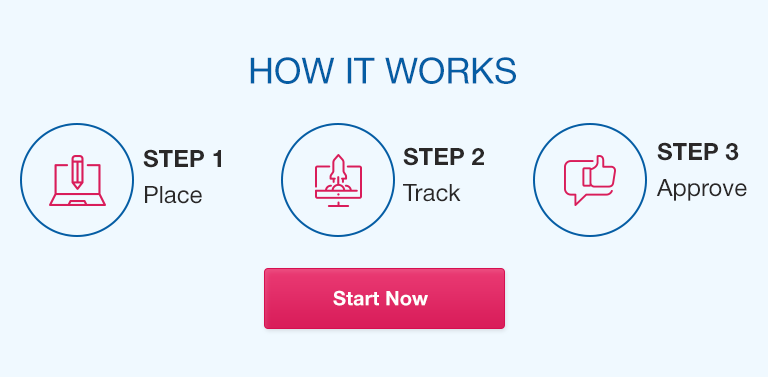Health Sector Transformation program in Saudi Vision 2030
COLLAPSE
Introduction
The Saudi Vision 2030’s Health Sector Transformation Program aims to raise healthcare quality in Saudi Arabia. The initiative has improved healthcare quality in several ways, such as by developing telemedicine services. This paper will discuss two healthcare quality improvements made possible by the Health Sector Transformation Program, how essential objective two applies to a current or former work environment, how to assess a quality improvement effort, and ideas for quality improvement projects.
The Healthcare Quality Improvements Achieved Under the Health Sector Transformation Program:
Implementing electronic health records is the first improvement in healthcare quality achieved under the Health Sector Transformation initiative in Saudi Vision 2030. In 2019, the Saudi Ministry of Health established the National Health Information Center to create and implement an EHR system (Hazazi, & Wilson, 2021). The EHR system enhanced patient safety by facilitating the efficient sharing of patient information among healthcare providers. It has also improved the standard of healthcare service by recording patient data in a timely and accurate manner, allowing for better coordination of care among healthcare providers. Metrics such as medication error reduction, better patient outcomes, and increased patient satisfaction have been used to assess the efficacy of EHRs in improving healthcare quality (Al Nemari, & Waterson, 2022).
The second improvement in healthcare quality achieved under the Health Sector Transformation program is implementing a patient-centered approach to healthcare delivery. The Saudi Ministry of Health has adopted several patient-centered initiatives, including the Patient Experience Program, which aims to improve the patient experience by involving patients in their care and empowering them to make informed choices (Mohiuddin, et al., 2021). This strategy improved healthcare quality by prioritizing patient needs and preferences, resulting in higher patient satisfaction and better health outcomes. Metrics such as patient satisfaction, better health outcomes, and lower healthcare costs have been used to assess the effectiveness of patient-centered care in improving healthcare quality (Rowe & Knox, 2022).
How Key Objective Two Applies to the Work Aetting
As a healthcare worker, I used to work in a hospital where the top goal was to improve the standard and efficiency of health services. Implementing a medication reconciliation scheme was one of my quality improvement projects. The program ensured that precise medication information was gathered and recorded for each patient to lower medication errors. Several departments, including pharmacy, nursing, and medical staff, had to work together to implement the initiative successfully. Creating a standardized medication reconciliation procedure that was simple to duplicate and scalable was one of the program’s significant aspects (Trinh, 2022). The program’s requirement that all medical professionals understand the significance of drug reconciliation and the proper implementation methods presented one of its most complex challenges.
One Quality Improvement Project that I Can Suggest to the Supervisor
I would recommend a patient safety reporting system to my supervisor to enhance the quality of care. Employees could discreetly report incidents, near-misses, and unsafe conditions through this system. The significance of this improvement lies in its potential to foster an environment where mistakes are seen as learning chances and safety is prioritized above all else. To gauge progress, tabs will be kept on everything from the kinds of reports received to the number of actions taken in response to them.
Conclusion
Several advances in healthcare quality have been made thanks to the Health Sector Transformation Program in Saudi Vision 2030. These advances include introducing computerized health records and implementing a patient-centered approach to healthcare delivery. Key Objective two stresses the significance of effectively providing healthcare to patients. Key Objective two is relevant to my present position because of the emphasis on providing timely and effective healthcare services of the highest possible quality.
References:
Al Nemari, M., & Waterson, J. (2022). The Introduction of Robotics to an Outpatient Dispensing and Medication Management Process in Saudi Arabia: Retrospective Review of a Pharmacy-led Multidisciplinary Six Sigma Performance Improvement Project. JMIR Human Factors, 9(4), e37905.
Hazazi, A., & Wilson, A. (2021). Leveraging electronic health records to improve management of noncommunicable diseases at primary healthcare centres in Saudi Arabia: a qualitative study. BMC Family Practice, 22(1), 106.
Mohiuddin, S. I., Thorakkattil, S. A., Abushoumi, F., Nemr, H. S., Jabbour, R., & Al-Ghamdi, F. (2021). Implementation of pharmacist-led tele medication management clinic in ambulatory care settings: A patient-centered care model in COVID-19 Era. Exploratory Research in Clinical and Social Pharmacy, 4, 100083.
F510
this was qoustion
Key objective 2 in the Health Sector Transformation Program within Saudi Vision 2030 is improving the quality and efficiency of health services.
Discuss two healthcare quality improvements that have been achieved under the Health Sector Transformation program. Be sure to reference how these improvements were measured.
Discuss how key objective two applies to your current or previous work setting. Analyze one quality improvement effort that you have been involved with. Include what was successful and what was challenging.
Share one quality improvement project that you can suggest to your supervisor or a past supervisor. Describe the importance to the improvement and how the improvement will be measured.
Expert Solution Preview
Two healthcare quality improvements achieved under the Health Sector Transformation Program in Saudi Vision 2030 include the implementation of electronic health records (EHRs) and a patient-centered approach to healthcare delivery. The establishment of the National Health Information Center and implementation of an EHR system have enhanced patient safety by enabling efficient sharing of patient information among healthcare providers, which has improved the standard of healthcare service. The patient-centered approach, including the Patient Experience Program, gives priority to patients’ needs and preferences, resulting in higher satisfaction and better health outcomes. Metrics such as medication error reduction, patient outcomes, and increased satisfaction have been used to measure the efficacy of EHRs and patient-centered care in improving healthcare quality.
Key Objective two in the Health Sector Transformation Program aims to improve the quality and efficiency of health services. In my previous work setting, improving the standard and efficiency of health services was also the top goal. To achieve this, I worked on implementing a medication reconciliation program to reduce medication errors. The program’s success was due to the collaboration of multiple departments, including pharmacy, nursing, and medical staff. Implementing a standardized medication reconciliation procedure that was simple to replicate and scalable was one of the most critical aspects of the program. One of the program’s most complex challenges was ensuring all medical professionals understood the significance of drug reconciliation and proper implementation methods.
To enhance the quality of care in a healthcare setting, I would suggest implementing a patient safety reporting system to my supervisor. The system would enable employees to discreetly report incidents, near-misses, and unsafe conditions, fostering an environment where mistakes are seen as learning opportunities, and safety is prioritized above everything else. Progress can be monitored by tracking the kinds of reports received and the number of actions taken in response.
Overall, the Health Sector Transformation Program has achieved significant advances in healthcare quality by introducing EHRs and a patient-centered approach to healthcare delivery. Key Objective two stresses the importance of providing timely and effective healthcare services of the highest possible quality. In my previous work setting, implementing a medication reconciliation program was a successful quality improvement effort that ultimately improved patient safety. A patient safety reporting system is a suggested project to enhance the quality of care in a healthcare setting, enabling employees to discreetly report incidents and promote safety. Metrics can be used to measure the success and efficacy of both these efforts.
#reply


